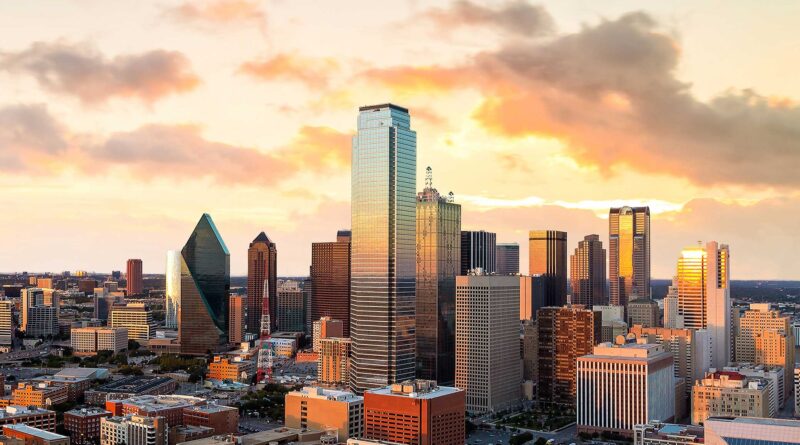History of Plano Texas
Plano, Texas, is a vibrant city located in the Dallas-Fort Worth metropolitan area, known today for its thriving economy, excellent schools, and high quality of life. But Plano’s transformation into a bustling modern city is rooted in a rich and fascinating history that spans nearly two centuries. From its early days as a small agricultural community to its rise as a major hub of business and technology, Plano’s history is a testament to the resilience and vision of its people.
Early Settlement and Founding (1840s–1870s)
The area that would become Plano was originally inhabited by Native American tribes, including the Caddo, who lived in the region for centuries before European settlers arrived. In the early 1840s, a group of settlers from Kentucky and Tennessee began to move into the area, attracted by the fertile land and abundant natural resources. Among the first settlers were the Peters Colony pioneers, who received land grants from the Republic of Texas as part of a colonization program.
One of the early settlers, William Foreman, played a key role in establishing the community. In 1848, he donated land for the construction of a schoolhouse, which became the center of the small settlement. As more families arrived, the community began to grow, and by the early 1850s, there were enough residents to warrant the establishment of a post office.
The name “Plano” was chosen for the settlement in 1852. According to local legend, the name was suggested by Dr. Henry Dye, one of the early settlers, who chose the Spanish word “plano,” meaning “flat,” to describe the area’s flat and expansive terrain. The name was officially adopted, and Plano was born.
Growth and Development (1870s–1900s)
The arrival of the Houston and Texas Central Railroad in 1872 was a turning point in Plano’s history. The railroad connected Plano to larger markets in Dallas and beyond, facilitating the transport of agricultural products such as cotton, corn, and wheat. This new connectivity spurred rapid growth, transforming Plano from a small farming community into a bustling town.
In 1873, Plano was officially incorporated, and the town began to develop its infrastructure. A public school system was established, and the first public school building was constructed in 1881. The town also saw the construction of several churches, a cotton gin, and other essential services that catered to the growing population.
The late 19th century also brought challenges to Plano. In 1881, a devastating fire swept through the downtown area, destroying many buildings and businesses. However, the resilient community quickly rebuilt, with brick and stone structures replacing the original wooden ones, giving downtown Plano the historic character that can still be seen today.
Plano in the 20th Century (1900s–1940s)
As Plano entered the 20th century, it remained primarily an agricultural community, but it began to modernize. The introduction of electricity, telephones, and automobiles in the early 1900s helped to improve the quality of life for residents. Plano’s population grew steadily, reaching nearly 1,300 by the 1920s.
During this time, Plano’s economy was still heavily reliant on agriculture, particularly cotton. The city was home to several cotton gins, and cotton was the main cash crop for local farmers. However, the Great Depression of the 1930s brought economic hardships to Plano, as it did to much of the country. Many farmers struggled to make ends meet, and the city’s growth slowed significantly.
Despite these challenges, the community remained close-knit and resilient. During World War II, many residents of Plano served in the military, while those who remained at home contributed to the war effort through activities such as growing victory gardens and participating in scrap metal drives.
Post-War Boom and Suburbanization (1950s–1970s)
The post-war period brought significant changes to Plano as the city began to transition from a rural farming community to a suburban residential area. The population began to grow rapidly, driven by the post-war economic boom and the migration of families to the suburbs.
In the 1950s, the construction of new housing developments began to reshape Plano’s landscape. The opening of the Dallas-Fort Worth Turnpike (now part of Interstate 30) in 1957 made commuting to Dallas more convenient, further attracting new residents to the area. Plano’s population nearly tripled between 1950 and 1960, reaching 3,695 by the end of the decade.
The 1960s and 1970s were marked by rapid suburbanization, as Plano continued to grow as a bedroom community for Dallas. The city’s infrastructure expanded to accommodate the influx of new residents, with new schools, parks, and shopping centers being built. During this period, the Plano Independent School District (PISD) was established, laying the foundation for the city’s future reputation for excellent public education.
Economic Transformation and Corporate Growth (1980s–1990s)
The 1980s and 1990s marked a period of significant economic transformation for Plano, as the city transitioned from a suburban community to a major business and technology hub. This transformation was driven by several factors, including Plano’s strategic location, skilled workforce, and pro-business environment.
In the 1980s, several major corporations began to relocate to Plano, attracted by the city’s favorable business climate and proximity to Dallas. One of the most significant developments was the decision by Electronic Data Systems (EDS), founded by Ross Perot, to establish its headquarters in Plano. This move brought thousands of jobs to the area and established Plano as a center for technology and innovation.
The success of EDS was followed by the arrival of other major corporations, including J.C. Penney, Frito-Lay, and Dr Pepper Snapple Group. These companies set up their headquarters in Plano, further boosting the city’s economy and contributing to its rapid population growth. By the end of the 1990s, Plano’s population had exploded to over 220,000, making it one of the fastest-growing cities in the United States.
Plano in the 21st Century
Plano has continued to thrive in the 21st century, solidifying its reputation as a major economic and cultural center in North Texas. The city’s population has grown to over 285,000, making it the ninth-largest city in Texas. Plano’s economy is diverse and robust, with a strong presence in industries such as technology, finance, healthcare, and retail.
The city has also earned a reputation for its high quality of life. Plano consistently ranks among the best places to live in the United States, thanks to its excellent schools, low crime rate, and abundant recreational opportunities. The city boasts a wide range of parks, trails, and cultural amenities, including the Plano Balloon Festival, which attracts thousands of visitors each year.
In recent years, Plano has focused on sustainable growth and development, with initiatives aimed at preserving green spaces, promoting public transportation, and supporting local businesses. The city’s historic downtown area has been revitalized, blending modern amenities with the charm of its historic buildings.
Conclusion
The history of Plano, Texas, is a story of transformation and growth, from its humble beginnings as a small agricultural community to its current status as a thriving economic powerhouse. Throughout its history, Plano has been shaped by the resilience and determination of its residents, who have worked together to build a community that is both prosperous and welcoming. As Plano continues to evolve, it remains a city that honors its past while looking forward to a bright and promising future.
Discover more from City Towner
Subscribe to get the latest posts sent to your email.




